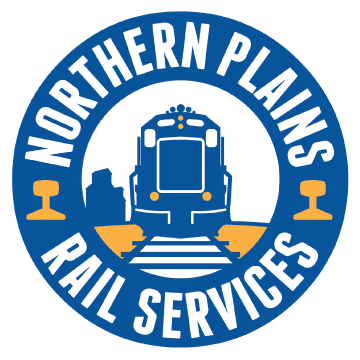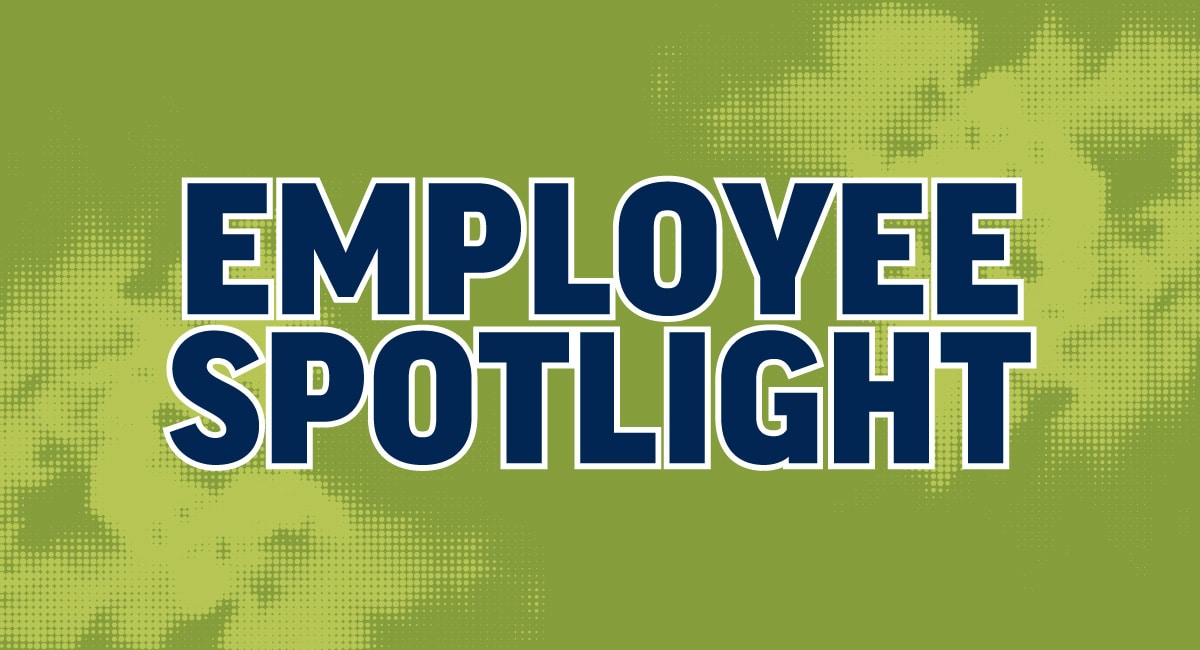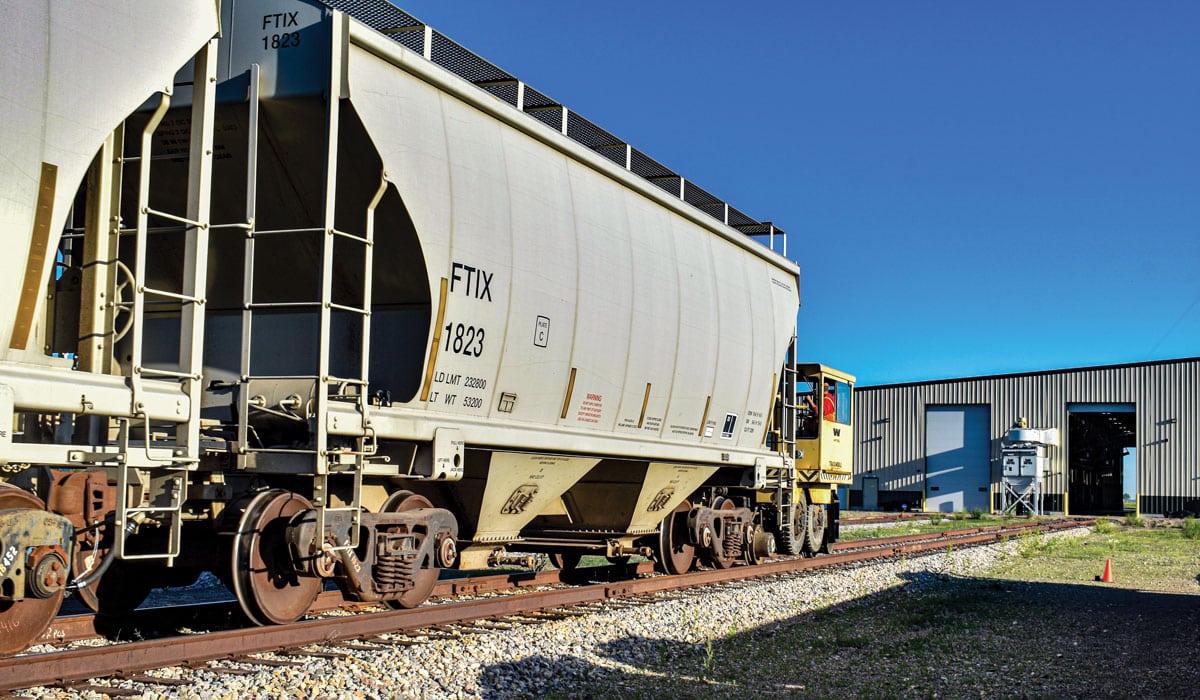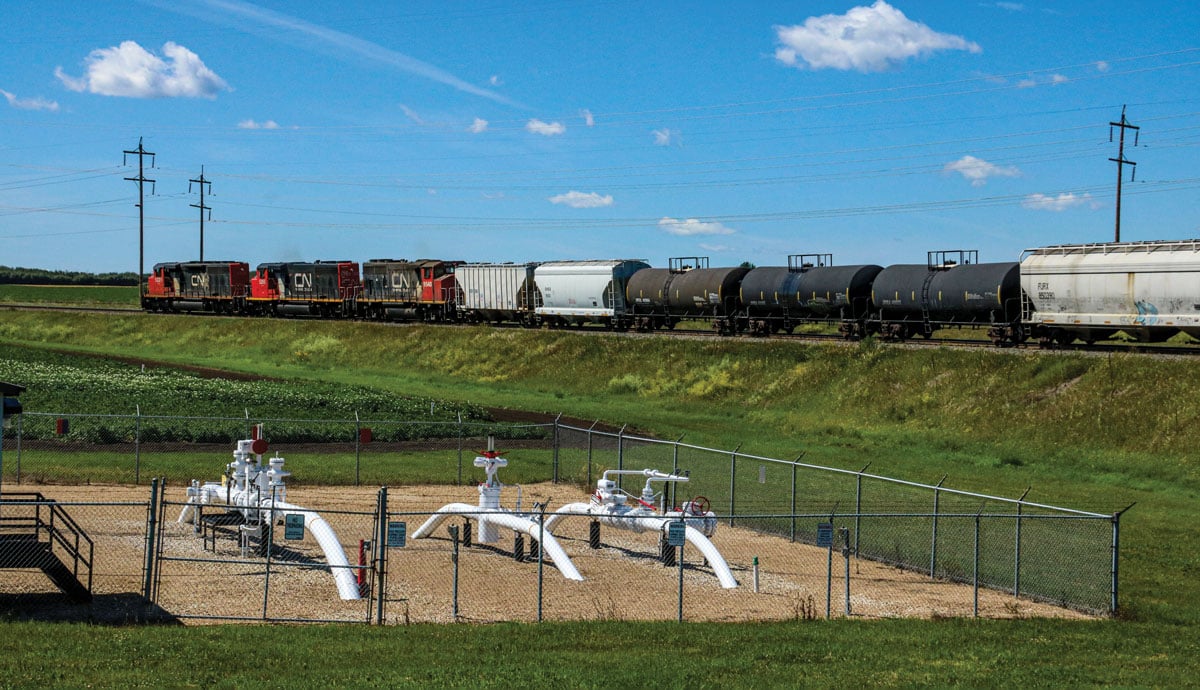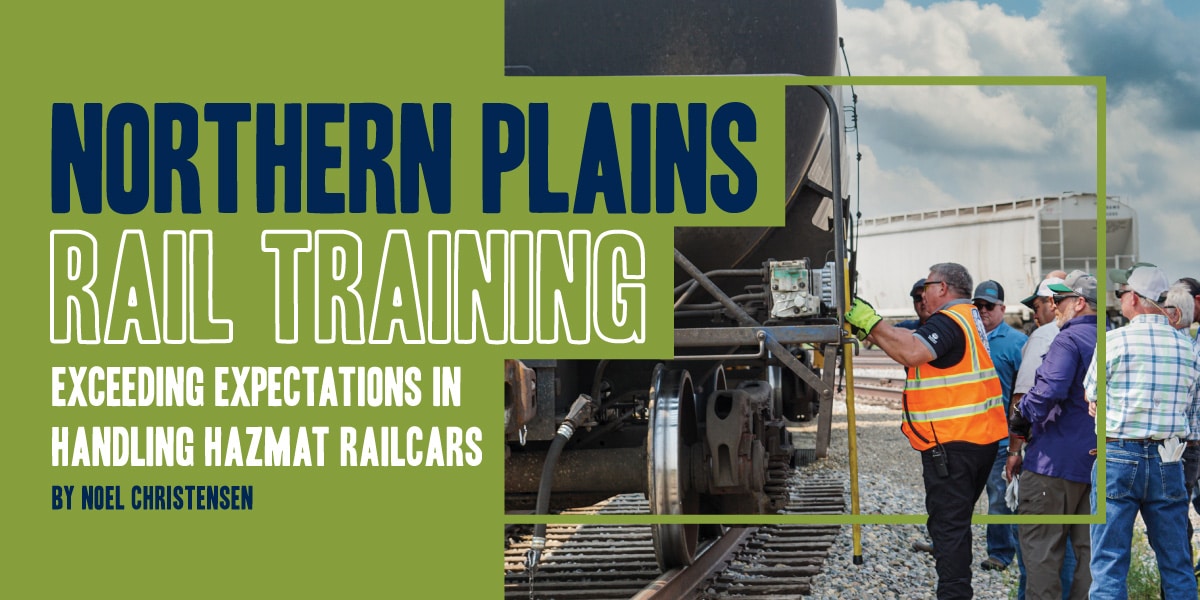
Northern Plains Rail Training: Exceeding Expectations in Handling HAZMAT Railcars
This past July, NPR hosted and delivered customized classroom and hands-on training to more than 60 students at its Grand Plains Rail Center. This was a “first of its kind” Hazardous Material Railcar Training course that featured use of an actual tank car, and covered the required Federal Railroad Administration (FRA) Hazardous Material Regulations and the required Occupational Safety and Health Administration (OSHA) Process Safety Management standards, together with those of the U.S. EPA. While all of this represented a new training product, and had its own logistical and technical challenges, the Northern Plains Rail Training team was pleased to partner with a new customer and several third parties to make the event successful.
Our customer – Helena Agri-Enterprises, LLC (HAE) – is one of the foremost agronomic solutions providers in the United States, with 6,000 employees and more than 500 branch locations. HAE is a receiver of Anhydrous Ammonia and Super Phosphoric Acid products shipped in tank cars.
Noel Christensen, Manager of Training Services for NPRT, explains, “While our overall role was to provide the expertise on the FRA rules, it became clear early in the planning process that we could offer more. As we became more intimate with the course agenda and content, we offered to secure a railcar training trailer from CP; provide additional NPR resources with expertise in railroad track anatomy; invite a local FRA Inspector to participate as an observer in the training course; and of course – host the training course.”
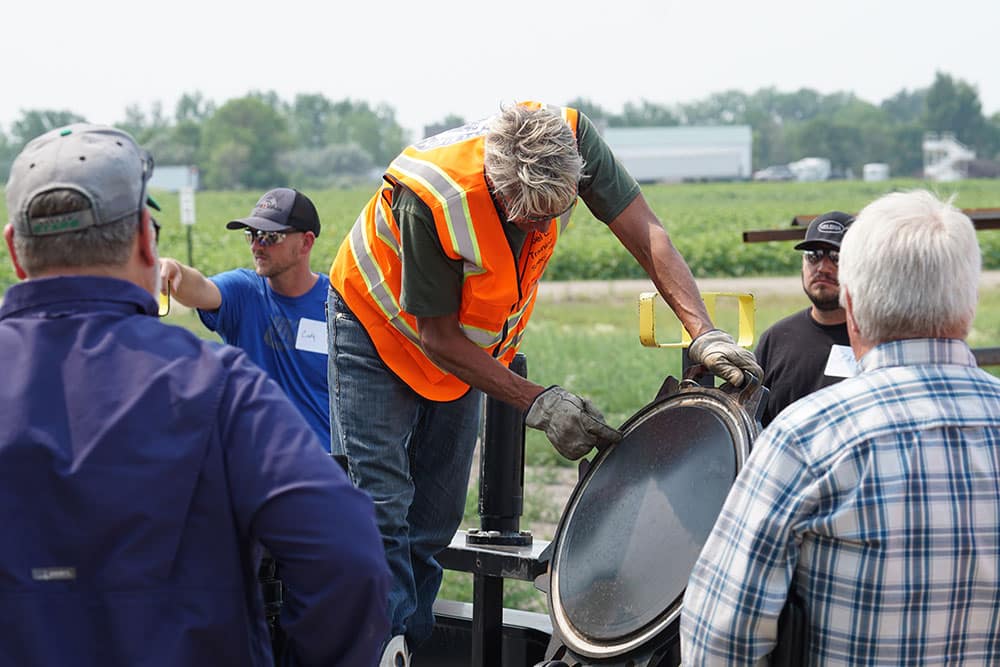
Noel Christensen provides a practical description of tank car construction and operations.
In the field, HAE students were issued railcar inspection forms and then split into two groups. One group was assigned to Track Anatomy, and the other assigned to the Railcar Training Trailer. NPRT’s Steve Fry was the lead instructor for Track Anatomy. The students were introduced to track nomenclature and inspection techniques to determine an assessment of track quality, how to conduct measurements, and when to consider track maintenance. The Railcar Anatomy session taught important concepts such as identifying car types, damage, defects, and valve and ancillary equipment identifications.
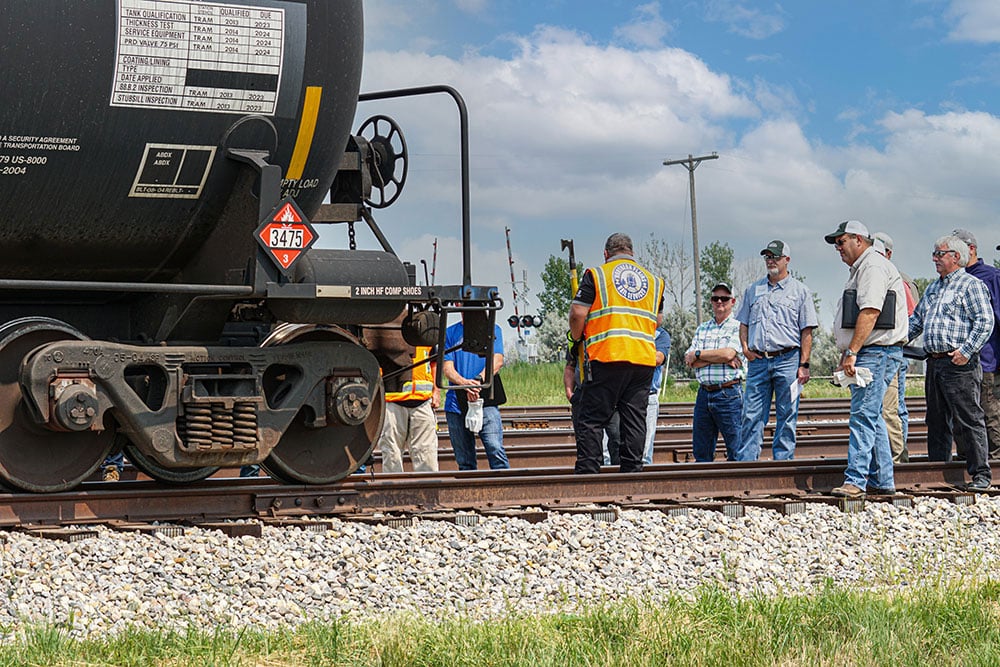
Steve Fry demonstrates safe practices working on or around rail equipment.
The afternoon session was wrapped up with a hands-on application of the HAE railcar inspection checklist for both an anhydrous ammonia and a phosphoric acid railcar. In preparation, Noel had made some mock changes on each railcar in order to test the students. Using the railcar inspection forms, each student was required to apply what they had learned throughout the day and perform an inspection using the inspection check list. Following the inspection, Noel directed a group review of findings.
After a long day of class and field instruction, it was testing time. “We were very pleased that 100% of the students had passed,” remarked Steve Fry. To celebrate the long day of work, Noel Christensen displayed his love for music as “Pomp and Circumstance” was played as each name was read aloud and the certificates of completion were handed out to the students. Certainly, some levity at the end of a challenging day.
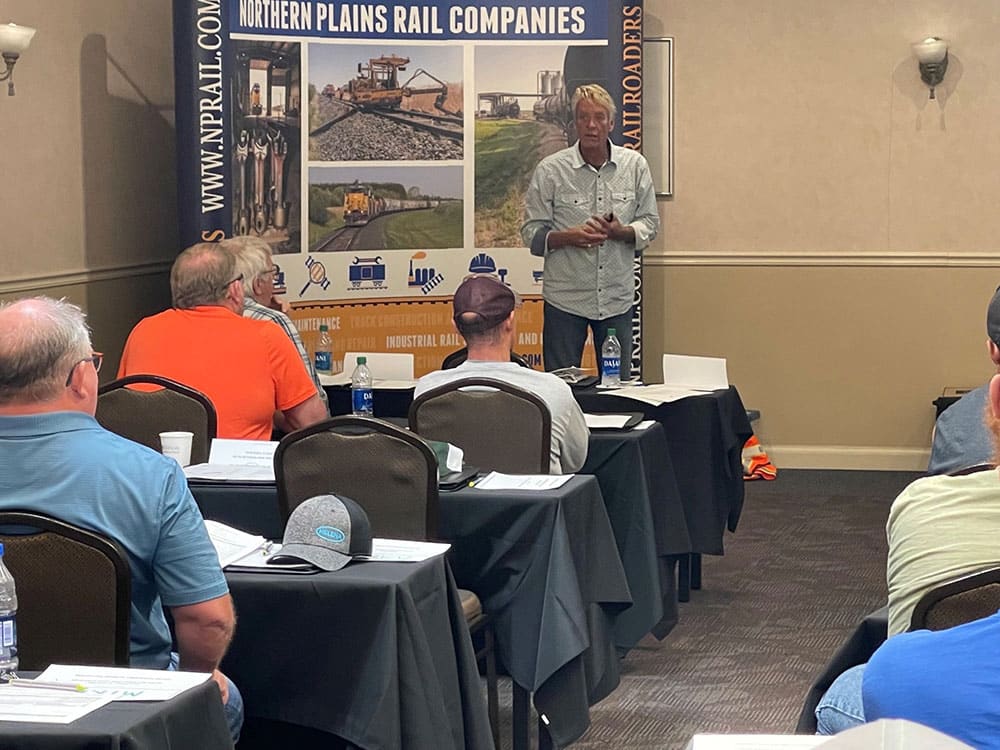
In the classroom, Noel Christensen provides attendees with the railroad view of handling hazardous commodities in a safe manner.
“This customized training course is a great example of what our experience at NPRT can do, working with the client and other industry stakeholders that will no question pay future dividends in making HAE’s workplace, and the entire railway community, safer,” remarked Noel.
NPRT in the U.S. has a strategic business alliance with the Canadian Heartland Training Railway Services in Canada. Together, both companies feature experienced railroaders who deliver world-class safety and technical training at industry locations, in classrooms, or in a practical setting on working railroad properties.


